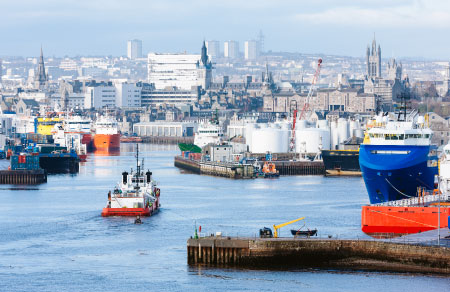Making the case for reinvestment in transport infrastructure
Engineering a more connected, cohesive, resilient, and carbon-neutral Europe
Energy securitization is an excellent and urgent example of the interconnected nature of economic development and climate policy. Energy security emerged as a catalyst for energy infrastructure renewal in the wake of Russia’s invasion in Ukraine and Europe’s resulting energy supply diversification efforts. Countries have funded massive renewable projects and invested in new “energy corridors” to both divest from dependence on Russian natural gas and bolster the effort toward carbon neutrality. Germany, for example, is building cross-continental green hydrogen supply chain pipelines, which Hatch is proud to support[1]. Achieving net-zero will require systemic change throughout the global supply chain in the coming decades. Focusing on climate-led development projects now will yield strong returns in the near-future, helping European states generate resilient economic growth while simultaneously tackling climate change.
As Europe’s third-largest sector in terms of greenhouse gas emissions, a comprehensive overhaul of the transport sector and its associated infrastructure represents a unique opportunity to invest in economic development projects while pursuing 2030 and 2050 carbon-reduction goals. There exists an urgent need for renewed focus on transport infrastructure development and its potential to create a more connected, cohesive, resilient, and carbon-neutral Europe. With its commitment to conquering climate change and its growing presence in Europe[2], Hatch is uniquely positioned to help transport infrastructure stakeholders reach decarbonization targets through complex engineering solutions.
At the heart of sustainable infrastructure engineering are five key principles. These principles were endorsed at the COP26 and G20 Summit in 2022 by world leaders, including European Commission President von der Leyen, as a part of ongoing efforts to spur climate-orientated infrastructure development.
Infrastructure should be climate resilient and developed through a climate lens.
Years of underinvestment and neglect have led to aging and decaying infrastructure across Europe. The renewal of critical infrastructure is essential to bolster intra-European trade flows and enhance resilience against climate change. Governments must adopt a proactive approach, moving away from intervening solely on emergency projects and prioritizing long-term planning, renewal, and innovation to address climate change. France’s ban on short-haul domestic flights where alternative rail services of less than 2.5 hour are available[3] could set the tone on how governments approach the need for a new transport paradigm. The French government is set to invest in its lower-emission rail infrastructure as a follow up to this policy.[4]
Hatch actively empowers infrastructure clients globally to address environmental threats and capture opportunities triggered by decarbonization. We have assisted Aberdeen Harbour, a nearly 900-year-old port in Scotland, develop its Green Port Strategy. There, we delivered an economic vision and master plan to help the port divest from oil and gas and embrace renewables. We also developed a risk-based benefit/cost analysis tool for San Francisco, CA, which will help stakeholders understand the economic and social risks associated with increased flooding and rising sea level. In Europe, we are energized by the opportunities to redevelop infrastructure with a climate-conscious approach. We can help you envision and achieve your dynamic infrastructure future too.

Strong and inclusive partnerships between host countries, developed country support, and the private sector are critical to developing sustainable infrastructure.
The circulation of goods and people by means of a modern, structured transportation network is tributary to cooperation between member states, the private sector and society. Strong partnerships are vectors of greatness. It’s not a new concept. The idea for the Chunnel – the 31.35-mile underwater tunnel beneath the English Channel that links England and France – was conceived in the 1880s. After a century of tergiversations, construction of the Chunnel began in 1987 and was completed in 1994, supported by the government while funded and executed by private sector excellence. Hatch’s legacy tunneling practice [5] aided the early design stages of the iconic link. For many, at the time of its completion, the Channel Tunnel was a symbol of innovation, connectivity, and the solidification of links between two nations that would mutually benefit from the never-before-seen infrastructure.
Similarly, public-private collaboration must be a central focus for contemporary infrastructure development and renewal projects.
Infrastructure should be financed, constructed, developed, operated, and maintained in accordance with high standards.
The United Nations’ Sustainable Development Goals promote building sustainable cities and communities to the highest standards and fostering innovation. This innovation extends to infrastructure projects’ financing and delivery models. The recently inaugurated Waaban Crossing in Kingston, Ontario, is the first bridge construction project in North America to be delivered using the Integrated Project Delivery model[6], where all partners are connected and share project risks from the onset. The integration of people, systems, business structures and practices increase value to the owner, reduce waste and maximize efficiency through all phases of design, fabrication and construction.
A new paradigm of climatefinance – spanning both public and private sources – is required to mobilize the trillions needed to meet net-zero by 2050 and keep 1.5 degrees within reach.
Mobilizing the vast amount of capital needed to meet net-zero by 2050 requires the cooperation of a global village. The Connecting Europe Facility (CEF) is a powerful European Union funding program designed to support the development of high-quality, sustainable trans-European transport, energy, and digital infrastructure. The CEF aligns closely with the European targets for decarbonization. It allows entities in all member states to advance infrastructure projects aligned with creating a more connected and cohesive Europe. It facilitates travel and trade, reduces regional disparities, enhances social cohesion, fosters innovation and creativity, and promotes sustainability through the development of innovative and low-carbon transport solutions.
Hatch has worked with a number of clients and levels of government to secure funding for projects, notably securing £226 million for the United Kingdom’s flagship Levelling Up Fund over first two rounds of funding. Our technical teams can advise and devise plans for any infrastructure stakeholder wishing to secure funding through the array of European funding schemes.

Climate-smart infrastructure development should play an important role in boosting economic recovery and sustainable job creation.
Investing in major transport infrastructure projects is a guaranteed gateway to stimulate economic regeneration and growth. Injecting capital into the development of European transport projects can limit inflation by creating sustainable jobs, boosting demand for goods and services and building infrastructure that will last. Transport infrastructure is also a determinant in increasing quality of life and generating social value for served communities. This increased economic activity can help counteract inflationary pressures, as it leads to higher production levels and increased competition, which can help stabilize prices. The impact of sustainable material use in climate-minded development projects can also mitigate inflation-driven costs, thereby powering resilient and sustainable economic growth throughout the infrastructure development lifecycle, particularly as material costs have risen exponentially since 2019.
Reinvesting in infrastructure is crucial for Europe to address the challenges it faces and engineer a more connected, cohesive, resilient, and carbon-neutral future. By prioritizing sustainable transport solutions, embracing innovative project development frameworks, and leveraging programs like the Connecting Europe Facility, Europe can thrive in promoting economic growth, social inclusion, and sustainability.
We are here to help you build a sustainable and connected Europe that meets the global challenges of tomorrow.
- Advancingtowards a net-zero future (hatch.com)
- Hatch and Küttner join to become Europe’s leading provider of sustainable industrial processes, novel green technologies, and battery solutions
- France moves to ban short-haul domestic flights - BBC News
- France plans to invest 100 billion euros in rail infrastructure by 2040 | Reuters
- Tunnels(hatch.com)
- Hatch wins 2023 Awards of Distinction for Kingston Third Crossing (Waaban Crossing) project

Vincent Hamel
Strategy Lead, Infrastructure | Europe, Infrastructure
Vincent Hamel is a transit engineer specializing in overseeing intricate infrastructure project portfolios within a multi-stakeholder environment. He offers guidance to both public and private entities engaged in constructing projects such as ports, terminals, highways, bridges, rail systems, and transit networks. Vincent has collaborated closely with numerous key infrastructure clients, playing a pivotal role in launching and successfully executing major transportation projects across Eastern Canada. Vincent is presently at the helm of Hatch's Infrastructure Sector's expansion efforts into the European market.